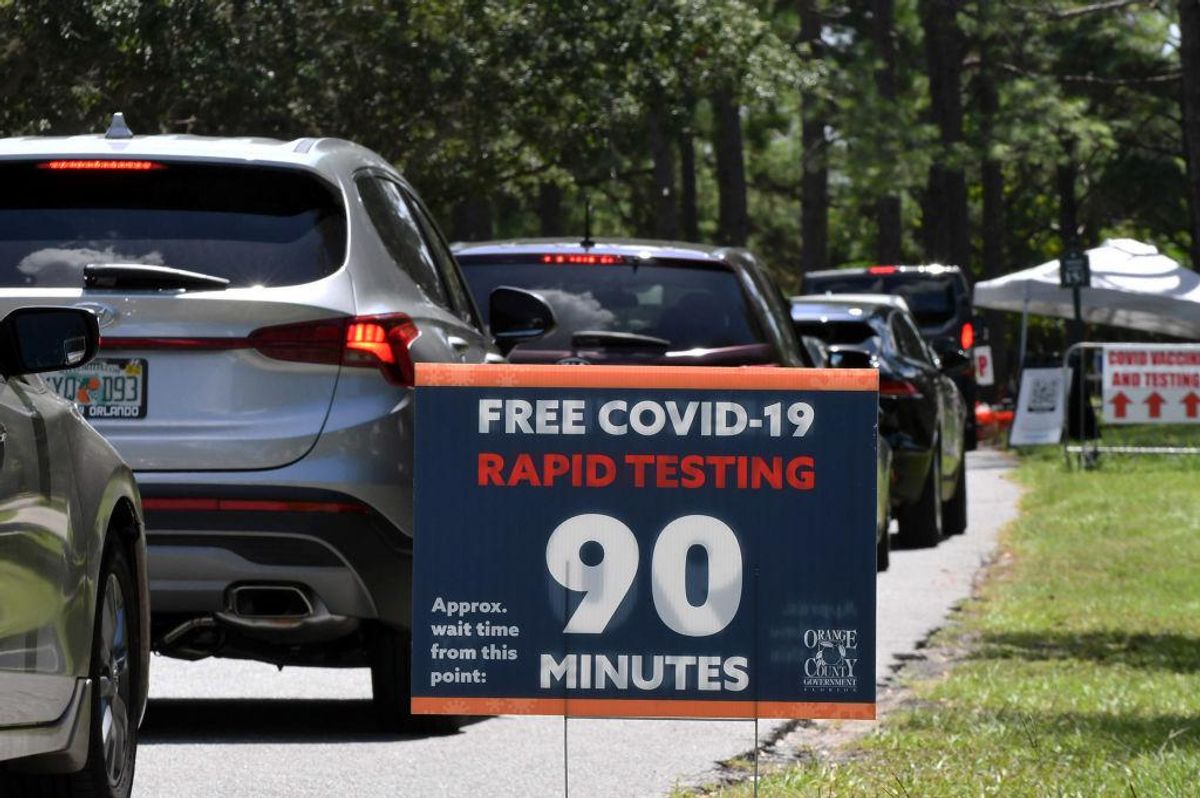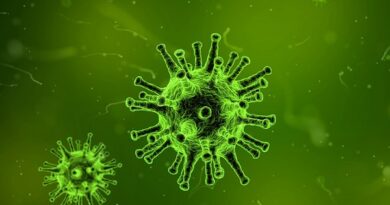Study: There’s no difference in COVID-19 viral load between vaccinated and unvaccinated; symptomatic or asymptomatic

A new study finds that there is no significant difference in COVID-19 viral load between vaccinated and unvaccinated individuals who test positive for infection, regardless of whether they have symptoms or not.
The pre-print study from UC Davis, which has not yet been peer-reviewed, suggests that when it comes to policy making on how to mitigate spread of COVID-19, vaccine status might not matter much for mask mandates or social distancing requirements. The reason is higher viral loads make the virus more transmissible, and it appears both vaccinated and unvaccinated people who catch the Delta variant of COVID-19 have high viral loads.
“Given the substantial proportion of asymptomatic vaccine breakthrough cases with high viral levels, interventions, including masking and testing, should be considered for all in settings with elevated COVID-19 transmission,” the study abstract states.
Though studies have shown the various COVID-19 vaccines appear to be successful at reducing infection, severe disease, hospitalization, and death from the virus, the study suggests that a fully vaccinated person with a breakthrough case of COVID-19 who has no symptoms is just as capable of spreading the virus to other people as an unvaccinated person who is sick but has no symptoms.
“The data gathered in this study during the surge of the Delta variant strongly support the notion that neither vaccine status nor the presence or absence of symptoms should influence the recommendation and implementation of good public health practices,” the study states.
In other words, the researchers are saying masking and testing requirements should apply to both unvaccinated and vaccinated people, since both groups transmit the Delta variant at about equal rates.
As study author David Coil explained to the Davis Enterprise: “We really wanted to focus on this public health message, which is that our data show there are a lot of asymptomatic people that have high viral loads, there are a lot of vaccinated people that have high viral loads and there are kids that have high viral loads.”
Coil said there are misconceptions that children aren’t spreading the virus or that if someone is vaccinated and has no symptoms, they don’t need to take precautions.
“The fact that we see really high viral loads in all these different populations suggests that public health messaging should be more universally applied,” he said.
The study authors gathered data from individuals who voluntarily sought testing for COVID-19 in two different areas of California over a two-month period from June 17 to August 31. Samples were collected from a community-based testing site in the Mission District of San Francisco as well as the city of Davis and Yolo County. A total of 869 positive samples were collected, with 500 from Yolo County and 369 from the Mission District testing site.
Every sample from Yolo County was from an asymptomatic person and 75% of the samples from San Francisco were from unvaccinated individuals. Both symptomatic and asymptomatic samples were collected from the San Francisco site.
“In our study, mean viral loads … were similar for large numbers of asymptomatic and symptomatic individuals infected with SARS-Cov-2 during the Delta surge, regardless of vaccine status, age or gender,” the study found.
One note: Coil told the Davis Enterprise that carrying a higher viral load does not necessarily mean you will transmit the virus to someone else, just that you’re more likely to do so. And scientists believe that the viral load in vaccinated persons drops more quickly than in unvaccinated persons, which is another reason to get vaccinated. Additionally, while breakthrough cases happen, people are still less likely to catch COVID-19 if they’ve been vaccinated.
“Yes, we see the same amount of virus in vaccinated and unvaccinated individuals, but the probability of any given person getting infected isn’t the same,” said Coil.
But the main argument of the study is that when it comes to public health policy, vaccination status is not a good indicator of whether an individual needs to abide by COVID-19 restrictions like mask mandates or testing.
“Mask requirements shouldn’t be just based on symptoms and vaccination status because someone that is vaccinated or asymptomatic or both may still be shedding a significant amount of virus and a mask would dramatically limit their ability to do so,” Coil said.
“There’s just a lot of people who carry the infection asymptomatically and they have comparably high viral loads to people who are symptomatic,” he said.
“Again, we don’t know that that results in a comparable rate of transmission; probably not, just because if one of your symptoms is coughing, coughing is a really good way to eject viral particles out in the air. When you’re asymptomatic and just breathing, you’re probably doing less of that. But you still have a lot of virus replicating in your upper respiratory tract that you could be shedding. So I think this highlights the importance and need for testing, because you can’t just wait for symptoms. Everybody should be testing regularly.”
Other studies have addressed the effectiveness of COVID-19 mitigation strategies like mask-wearing. The U.S. Centers for Disease Control and Prevention recently published new research that suggests school districts that mandated mask-wearing had fewer cases of COVID-19 than districts without mandates. On the other hand, a peer-reviewed study from the University of Louisville found that mask use requirements during the pandemic had no substantial effect on COVID-19 case growth during periods of high-transmission. N95 and K95 respirators are the masks that are most effective at reducing transmission of COVID-19, but mandated mask-wearing for children has been associated with negative impacts on social learning.
Extreme measures like lockdowns inflicted great social and economic costs on the nations that adopted those policies without a clear benefit, as a study from University of Chicago economist Casey Mulligan showed the virus spread more inside homes than in workplaces.
The best way to make sure you’re not spreading COVID-19 or any other illness is simple: If you’re sick, stay home and limit your contact with other people.
In areas with high numbers of COVID-19 cases, getting tested regularly for the virus, even if you’re vaccinated, can help you determine if you have an asymptomatic case and need to limit contact with other people.


